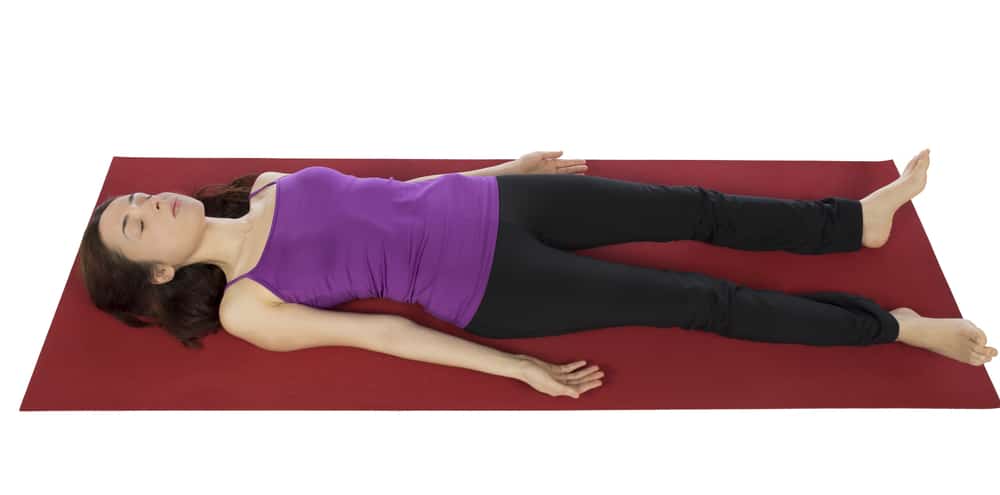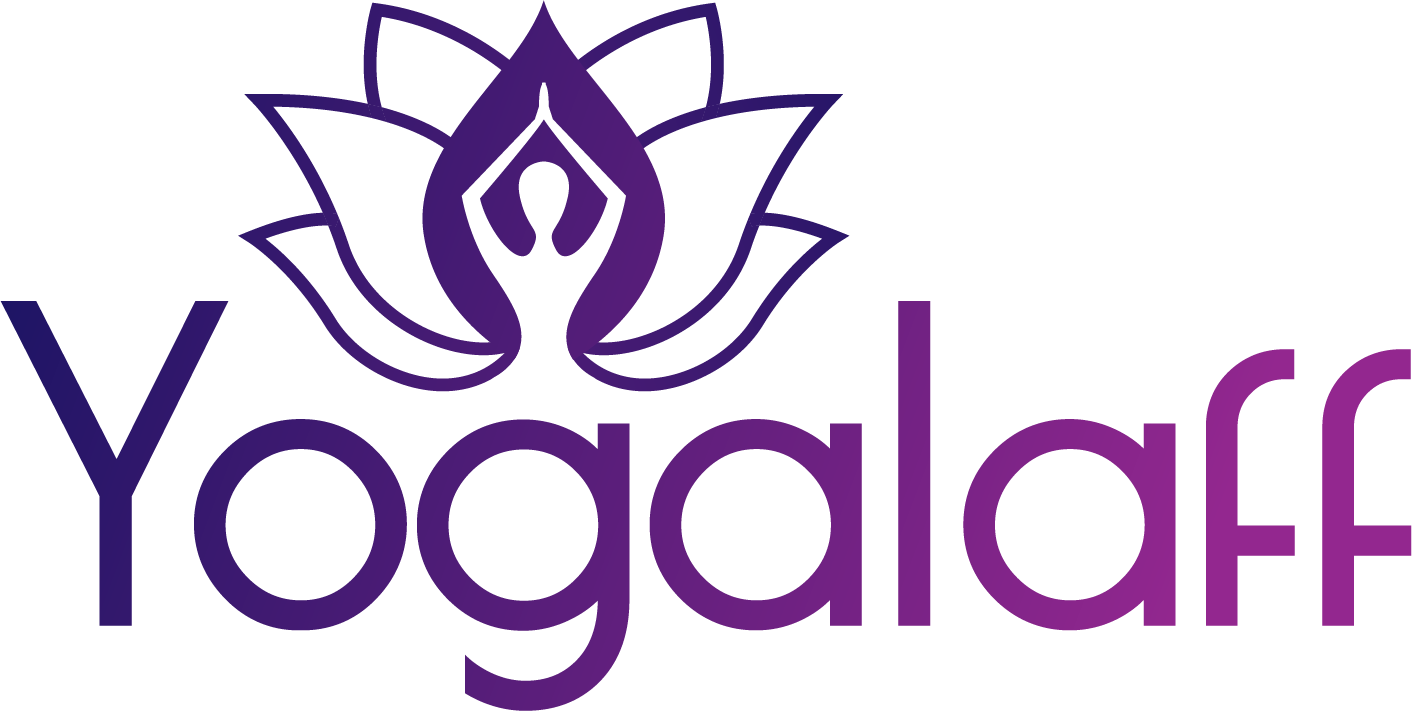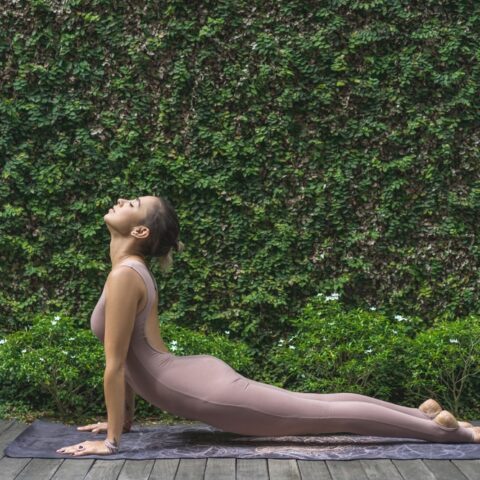Many people suffer from bad knees for different reasons.
Those reasons could be from an injury, genetics, arthritis or something else.
Often times with bad knees, individuals think that avoiding exercise is the best option but that is not always the case.
Exercise is extremely helpful when recovering from an injury or even dealing with arthritis, you just have to know which exercises are right for you specifically.
In my opinion, yoga is the answer, as it is for most ailments and tragedies that life throws at us.
Yoga is for everyone and anyone, especially for anyone with injuries or stiff joints because it seems for every pose there is a modification of that same pose.
Yoga is meant to heal the broken and to walk the lost home.
Sometimes when individuals are halted because of an injury they feel broken or lost.
If you fall into one of these categories, we’ve created a specific yoga sequence for bad knees (or a set of recommended yoga poses).
This article will provide recommendations for yoga poses for bad knees, yoga poses for arthritic knees, poses to avoid if you have bad knees and teach you how to keep your knees from hurting on the yoga mat.
Note that we also recommend specific yoga mats for bad knees and a set of yoga routines for people interested in gentle yoga.
Why Use Yoga for Bad Knees?
 Yoga is a gentle exercise that is for everyone and anyone, the different poses, and modifications of the poses are great for individuals who are just starting out with yoga or who have suffered injuries.
Yoga is a gentle exercise that is for everyone and anyone, the different poses, and modifications of the poses are great for individuals who are just starting out with yoga or who have suffered injuries.
Avoiding exercise when you are injured is not always the best approach because it could slow the recovery process down due to your body no longer being in motion.
Yoga is a great alternative if you are used to intense exercises but need to slow down for a while until you are done recovering.
The spiritual, physical, mental and emotional benefits that yoga brings is another reason why yoga is excellent for bad knees or injuries because your mindset will soon change with consistent practice.
It is important to be patient with yourself and to always listen to your body while doing yoga. If something hurts while in a certain pose then come out the pose immediately.
Yoga is not intended to cause further injury but to help heal current injuries.
Yoga Poses For Bad Knees
Yoga is the answer for most if not all ailments, whether physical or mental, yoga is it. Certain poses will not only strengthen your knees but will help strengthen the muscles around your knees as well.
It’s also important to note that if you, ever at all feel any pain when doing any yoga poses to please stop immediately. Yoga is meant to heal current injuries not to cause future ones.
Props such as yoga socks, blocks, and straps are always, always recommended when you have an injury because they add extra stability and support in poses.
Please do not hesitate to use yoga props and accessories, they are there for a reason!
The recommended poses below are usually pretty good if you suffer from bad knees.
The Recommend Poses: Yoga Sequence for Bad Knees
Mountain Pose: Tadasana
The mountain pose is seemingly simple, yet if done correctly is one of the most powerful poses in yoga. This pose brings great consciousness to the muscle group around your knees that aide in keeping your knees on track every day.
Often times knee injuries occur because of weak or poor muscles around the knees and when those muscles cannot support your knees, injuries can occur.
How to: In this pose you will stand straight up with your feet touching (it’s okay if your feet don’t touch all of the way, you can stand in a way where they almost touch), rest your arms and hands down by your sides, place your weight evenly through both of your feet through your soles.
You must engage the front of your thighs in order to lift your kneecaps, which keep your pelvis engaged, your chest open, and your shoulders back. Stand in your power in this pose for a few rounds of breath and you will already feel an overall difference. (Source: Practice with Kris)
Warrior Poses: Virabhadrasana I, II and II
The warrior I, II and III pose greatly strengthen your quadriceps and the muscles that make up that region of your body.
The quadriceps and its muscles support your knees and when your quads are weak your knees take the brunt of the work and end up become strained for having to hold that much weight. But when your quads are strong your knees can have a rest.
How to: All three Warrior Poses require both of your legs to work but in different directions. The different directions force other parts of your legs to also become strengthened to hold you up in the pose on both ends.
Let’s discuss Warrior I for now. Stand with your feet roughly three feet apart, point your right toes towards the front-end of your mat. Turn your left foot to point towards the top left corner of the mat.
This pose can be modified depending on the flexibility of your hips. As you modify this pose, you may want to turn your left foot, as needed, to help you support your hip and knees.
Next, bend your right knee and lift your arms towards the sky and make sure to keep your weight equally distributed on both feet. Do a few rounds of breathing exercises in this pose, and you will come out of it feeling like a warrior. (Source: Stylecraze Yoga)
Bridge Pose: Setu Bandha Sarvangasana
This is the modification of Wheel Pose. Bridge Pose is good because it strengthens your bottom, legs, and hips, which if any of these are weak then your knees can become compromised. This is great for strengthening your whole lower body which in turn helps to keep your knees strong.
How to: Start out laying on your back to do the bridge pose. Once on your back make sure your to bend your knees and place your feet hip distance apart.
This is the pose where you can use props, like a yoga block. If you like, you can use a yoga block between your knees. Many people will find that using a yoga block will make the bridge pose more comfortable.
Next, inhale and raise your hips up to the sky with your hands by your side on the floor.
Squeeze the block as you lift your hips, hold the pose for about five breaths and repeat a few times. Be sure to listen to your body. If you have bad knees, don’t overdo it. (Source: Yoga With Adriene)
Balancing Half Moon Pose: Ardha Chandrasana
This pose is excellent for catering to your hamstrings, quadriceps, thighs, and hips, which all help keep your knees healthy and intact. The balancing half moon pose is an excellent pose all around because it caters to your whole lower body in different ways.
Another pose where you can use props; feel free to use a yoga block to rest your hand on if it doesn’t reach the floor yet. The wall is a great prop as well but, be sure not to lock your knees if you use the wall and if you knee already feels tender or is swollen, please do not do this pose.
How to: You can either start in the center of your yoga mat or against the wall. Position your feet slightly wider than your hips and make sure to point your right toes toward the front of the yoga mat. If you’re using a yoga block, make sure to hold it in your right hand.
Put all of your weight on your right leg (modify as needed). Then attempt to lift your left leg straight back behind you and bend your body forward. Reach your hand or block towards the floor. Now make sure to lift your left leg to ensure that it is parallel and lift your left arm to the sky.
Do the balancing half moon pose through a few breath cycles. Repeat if your body is capable of completing a few rounds. Remember to perform the same move on the other side if possible. (Source: Yoga With Adriene)
Triangle Pose: Trikonasana
Triangle Pose works the thighs, especially the inner thighs as well as the hamstrings. This pose also aides giving flexibility in the hips, which in turn strengthens the knees. If anything this pose is a great stretch for your legs as well as your side body.
How to: Standing with your feet approximately four feet apart, turn your right toes towards the front of your yoga mat. Next, make sure that your left toes are angled forward also. Take your arms and open them towards the front and back of your mat.
Try to keep your right leg as straight as possible. Reach your right arm forward and down towards your shin or ankle. Lift your left arm straight towards the ceiling and open your chest. If your neck is feeling okay, you can look up. Hold this pose for five to ten breaths and gently come out of the pose and repeat on the other side.
It’s important to note that, at times, these poses can be modified and to keep a slight micro-bend in your knees during the standing poses. The micro-bend will prevent future knee injuries in these poses.
These poses are good for strengthening the muscles around the knees along with other muscles in the legs, which all, in turn, increase the flexibility of the knees, mitigating future injuries. (Source: Mind Body Soul)
Can Yoga Help with Arthritic Knees?
Yes, yoga can help with arthritic knees. There are exercises that individuals suffering from arthritis can do to lessen or help with the pain associated with it. We recommend Yogendra Nishpanda Bhav, Savasana, Sukhasana, Hastapadangushtasna and Yastikasana.
Arthritis will hit all of us at one point or another. Sometimes arthritis occurs in younger individuals due to injury or other issues and other times arthritis occurs in older individuals. Arthritis can be a sign of a great life because you’ve done a great deal of physical work and now your body is slowing down.
Our joints and cartilage hold our arms and legs up throughout the years and over time they begin to disintegrate and break down. When joints and cartilage begins to break down, this means our body weight will now be supported on our bones. This can be quite painful. (Source: BrettLarkinYoga: Yoga Sequence for Bad Knees)
- Yogendra Nishpanda Bhav: It is the non-movement pose, that is perfect for individuals with arthritis. Find a wall to lean against, with your head resting on the wall and your legs straight out in front of you, make sure there is about 2 – 3 feet length between your legs, place your hands on your upper thighs with your hands facing towards the ceiling. Sit in the pose and breathe, listen to the sounds around you and hold the pose for about five minutes.
- Savasana: Savasana is also known as corpse pose because you lay on your back in silence on the floor, not moving. This pose is very relaxing because of that and is good to rest your knees and helps in the repair of muscles. Lie flat on your back with your arms and legs spread out by your side and just breathe, stay in this pose for as long as you can; your knees and the rest of your body will thank you.
- Sukhasana: Sukhasana, also known as the easy pose, because you are sitting with your legs crossed sitting with a straight back. This pose aides increasing flexibility in your knees, which is important if you have arthritis. When your legs are crossed, place your hands on each side of your knee, sitting straight up and breathe in and out and repeat for about five to ten breaths.
- Hastapadangushtasna: Much like forward bend but upside down while grabbing your big toes, this pose helps strengthen the muscles around your knees, which aides in combating knee pain. Flexibility is increased which helps in reducing future injuries. Lie on your back and lift one leg straight in the air, leaving your other leg lying straight on the floor and grab your big toe of the leg in the air. Make sure to lift your upper body to help prevent strain. Try on the other leg and repeat a few times.
- Yastikasana: Much like corpse pose with your legs straight out in front on the floor but instead your arms are stretched straight over your head. This pose is not only good for relaxation and giving your muscles a break but it’s also good for relieving stress and beating fatigue. If you have arthritis and would like to do this pose, please make sure your ankles are upward in this pose it’ll take any strain off of your knee. While there is no cure for arthritis simply because it involves your joints and cartilage withering away and that is natural. The condition can be manageable, meaning that you can live with it and have symptoms or no symptoms at all. Exercise helps tremendously, you just have to know which exercises to pick for yourself and know when to stop if you and when you feel any type of pain.
Yoga Poses to Avoid If You Have Bad Knees
Although yoga is great for injured and non-injured individuals, some poses should be modified if you have and knees or a knee injury. Child’s Pose, Hero Pose, One-Legged King Pigeon Pose, Yogi Squat and Bound Angle Pose should all be modified for bad knees because of the strain that is put on your knees.
You don’t want to cause future injuries. Luckily with each yoga poses there is, a modification exists. These poses can still be done if you have bad knees, just be sure to do the modified versions.
Final Thoughts
If you have bad or arthritic knees, exercise is still possible with certain poses. This article has outlined a potential yoga sequence for bad knees, although the poses can and should be modified to mitigate future injuries.
All of the poses mentioned are designed to strengthening the muscles around your knees as well as other muscles in your legs and hips. An increased level of flexibility around the knee is the main goal in all of the poses, which aides in mitigating future injuries.
Exercise is key to help with injuries as well as preventing future injuries because of the strengthening of the leg muscles and muscles around the knees.

